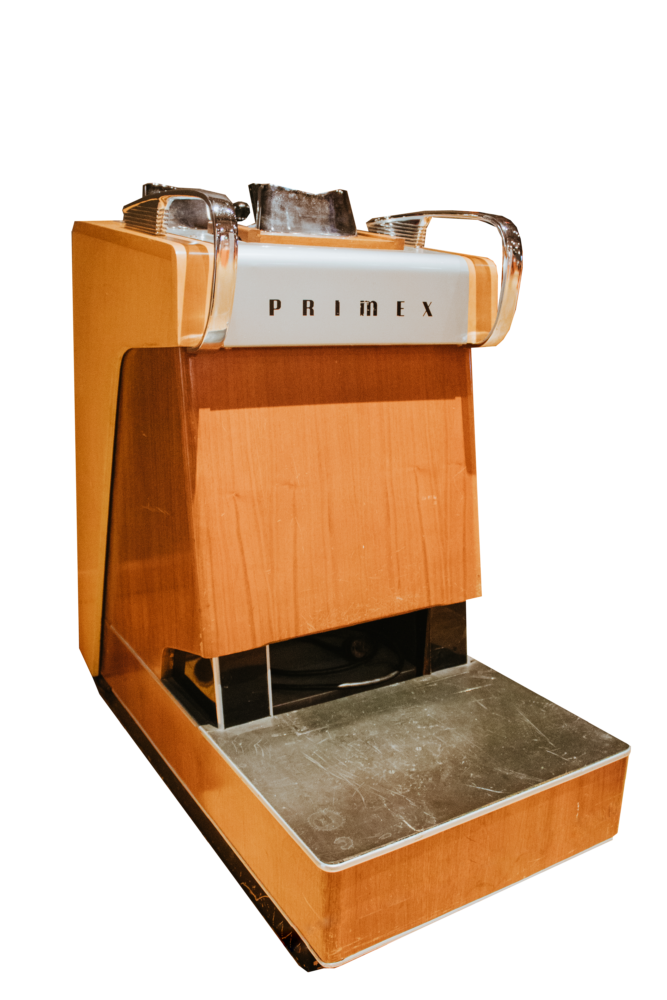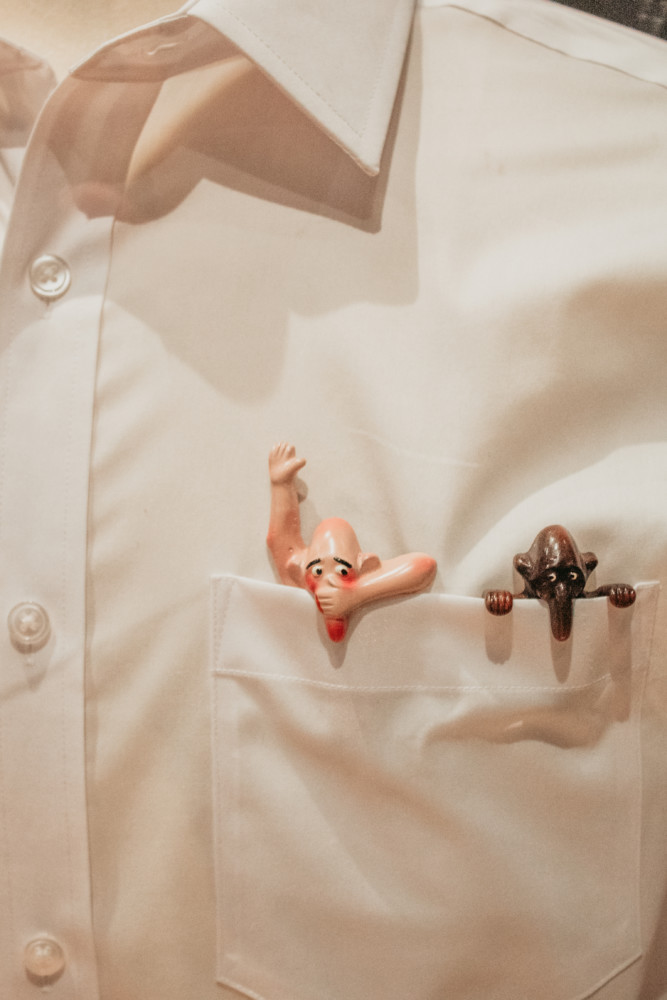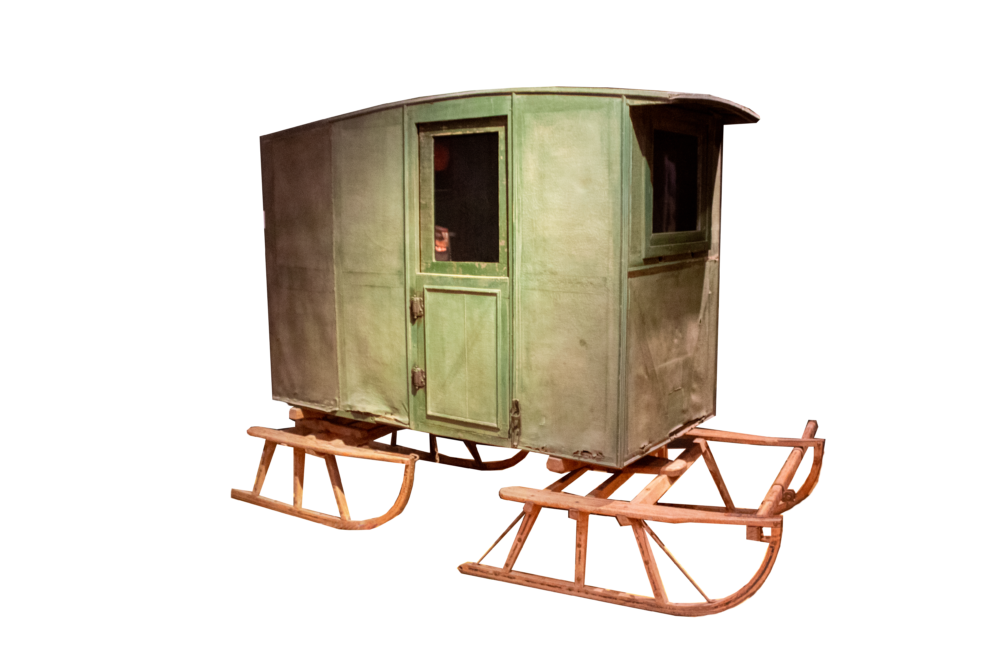Fox Cities ABCs
Get schooled at The History Museum at the Castle’s newest exhibit
From a voting booth to a streetcar motor, The History Museum at the Castle’s newest exhibit allows visitors to discover local history through rarely before seen artifacts that correspond to each letter of the alphabet.
Curators waded through more than 20,000 artifacts in the museum’s permanent collection to select the 26 featured in the exhibit titled Fox Cities ABCs. Chief Curator Dustin Mack says the artifacts represent different communities within the Fox Cities and are items that have never, or rarely, been displayed.
“The goal was twofold,” Mack says. “We wanted to focus on local history with local pieces and show why they are relevant to a regional and national audience. Second, we wanted it to be fun, light and engaging. We wanted people who are interested in local history to come and learn, but also people who maybe just want a fun family experience can get it at this exhibit too.”
Visitors will notice artifacts are not displayed in alphabetical order, which was an intentional choice.
“We like to think of history as exploration and discovery, so this forces people to go out and piece the letters to the artifacts and make a little bit of a game out of it,” Mack says.
The museum closed in March due to public health concerns, but plans to reopen June 12 with limited summer hours. Visit myhistorymuseum.org for updates. Fox Cities ABCs will run through 2022, so visitors have plenty of time to catch it. Here’s a taste to hold you over until then.
X is for X-ray Machine
 During the 1930s, ‘40s and ‘50s, stores used shoe-fitting fluoroscopes to fit shoes for customers. A typical fluoroscope was made with a wooden box that had a hole near the bottom in which customers placed their feet. A fluorescent image of the bones in their feet appeared through three viewing ports. This allowed the customer as well as parents and shoe salespeople to see the foot in comparison to the shoe and ensure a proper fit. This fluoroscope from The Heckert Shoe Co. in Appleton was touted in historical city directory advertisements for the store. “Pretty consistently throughout the 1940s they advertised that you could fit your shoe with x-rays, so it must have been a real selling point for them,” Mack says. “It’s been surprising how many [people] of the older generations have come through the exhibit already and know that machine and have been on it.” By the 1950s, the U.S. government had restricted use of commercial fluoroscopes due to the dangerous amount of radiation they produced.
During the 1930s, ‘40s and ‘50s, stores used shoe-fitting fluoroscopes to fit shoes for customers. A typical fluoroscope was made with a wooden box that had a hole near the bottom in which customers placed their feet. A fluorescent image of the bones in their feet appeared through three viewing ports. This allowed the customer as well as parents and shoe salespeople to see the foot in comparison to the shoe and ensure a proper fit. This fluoroscope from The Heckert Shoe Co. in Appleton was touted in historical city directory advertisements for the store. “Pretty consistently throughout the 1940s they advertised that you could fit your shoe with x-rays, so it must have been a real selling point for them,” Mack says. “It’s been surprising how many [people] of the older generations have come through the exhibit already and know that machine and have been on it.” By the 1950s, the U.S. government had restricted use of commercial fluoroscopes due to the dangerous amount of radiation they produced.
R is for Reindeer
 This Donner puppet starred in the 1964 stop motion animated television special “Rudolph the Red-Nosed Reindeer.” Wires that connected to the puppet’s hooves and neck allowed a puppeteer to manipulate its movements. The puppet is on loan from the family of Maury Laws, an Appleton resident from 1985 until his death in 2019, who served as musical director for the Rankin-Bass production. As musical director, Laws arranged the show’s songs for a full orchestra and adapted the parts for instrumentalists and vocalists. “Like a director tells people how to act, the musical director tells them how to perform, what to do and when to do it,” Laws said in a 2018 interview with FOX CITIES Magazine. “Music in film is used to say what you can’t say verbally.” Laws was given the puppet after production of the show ended. In 1964, the hour-long special was originally budgeted to air twice on NBC. However, the program has aired multiple times every year for the past 55 years, making it the longest continuously-running Christmas special in television history.
This Donner puppet starred in the 1964 stop motion animated television special “Rudolph the Red-Nosed Reindeer.” Wires that connected to the puppet’s hooves and neck allowed a puppeteer to manipulate its movements. The puppet is on loan from the family of Maury Laws, an Appleton resident from 1985 until his death in 2019, who served as musical director for the Rankin-Bass production. As musical director, Laws arranged the show’s songs for a full orchestra and adapted the parts for instrumentalists and vocalists. “Like a director tells people how to act, the musical director tells them how to perform, what to do and when to do it,” Laws said in a 2018 interview with FOX CITIES Magazine. “Music in film is used to say what you can’t say verbally.” Laws was given the puppet after production of the show ended. In 1964, the hour-long special was originally budgeted to air twice on NBC. However, the program has aired multiple times every year for the past 55 years, making it the longest continuously-running Christmas special in television history.
Long before Amazon Prime and overnight shipping, mail was delivered by horseback in warm weather or horse-drawn sleigh during winter months. This mail sleigh served one of Outagamie County’s first rural mail routes which was established on March 15, 1900. Mail carrier Fred Meyer used this sleigh to traverse a 25-mile circuit every day to serve over 1,100 residents in the Black Creek area. Inside the sleigh there are crates that would have been used to store mail. A hole in the sleigh’s roof would have accommodated a chimney, as there was a stove in the sleigh’s cabin to heat it. Horse reins fit through a slot at the front of the sleigh so the mail carrier could drive while staying warm inside. Before countywide mail delivery, farmers and rural residents trekked to the closest town to pick up mail from post offices. The challenges faced by rural mail carriers traveling by sleigh encouraged the county to eventually improve country roads.
Mack says this trade ledger is among the oldest artifacts in the exhibit. It belonged to Charles A. Grignon, who began operating his father’s trading post near present day Kaukauna in 1830. Grignon sold and traded a variety of items, such as goods and furs, with the Menominee Indian Nation which encompassed much of the Fox River Valley. Grignon tracked these transactions in this ledger. Beaver pelts proved to be among the most valuable commodities, sought after by wealthy European and American men who wore beaver fur hats. In 1837, Grignon built a mansion at the post as a wedding present for his bride, Mary Elizabeth Meade. Today, the restored “Mansion in the Woods” is a National and State Historic Site that’s open seasonally for tours and events.
P is for Peekies
 Appleton native and WWII veteran Bob Neller capitalized on his military service by manufacturing Peekies based on the pop culture graffiti “Kilroy was here.” Throughout WWII, American G.I.s would doodle a meme-like cartoon of a bald man peeking over a wall with his long distinctive nose and fingers hanging over the edge. Captioned “Kilroy was here,” this graffiti appeared on equipment, buildings and facades around the world. “It was a way to make American soldiers feel comfortable that someone had been there before them and it was kind of a joke,” Mack says. Neller’s novelty Peekies were made of plastic and could be hung on lampshades, picture frames or anywhere, but most peeked over shirt pockets. At one point, Neller’s factory on S. Pierce Avenue produced as many as 10,000 Peekies a day, but the plant closed in 1947 when it was destroyed by fire.
Appleton native and WWII veteran Bob Neller capitalized on his military service by manufacturing Peekies based on the pop culture graffiti “Kilroy was here.” Throughout WWII, American G.I.s would doodle a meme-like cartoon of a bald man peeking over a wall with his long distinctive nose and fingers hanging over the edge. Captioned “Kilroy was here,” this graffiti appeared on equipment, buildings and facades around the world. “It was a way to make American soldiers feel comfortable that someone had been there before them and it was kind of a joke,” Mack says. Neller’s novelty Peekies were made of plastic and could be hung on lampshades, picture frames or anywhere, but most peeked over shirt pockets. At one point, Neller’s factory on S. Pierce Avenue produced as many as 10,000 Peekies a day, but the plant closed in 1947 when it was destroyed by fire.
Help Make History
Help the History Museum document the COVID-19 pandemic by keeping a journal or diary of your experiences. Consider documenting:
•Ways daily life has changed and how that makes you feel
•How your personal relationships with family members, friends and/or colleagues have changed
•Activities or “simple pleasures” that you miss during this time or new pursuits you have
discovered
•Have you, a friend or a loved one become sick with COVID-19 or another ailment? How have you dealt with the illness?
When the threat from COVID-19 passes, community members can donate their journals and diaries to the History Museum so future generations can learn from our experiences.












Leave a Comment